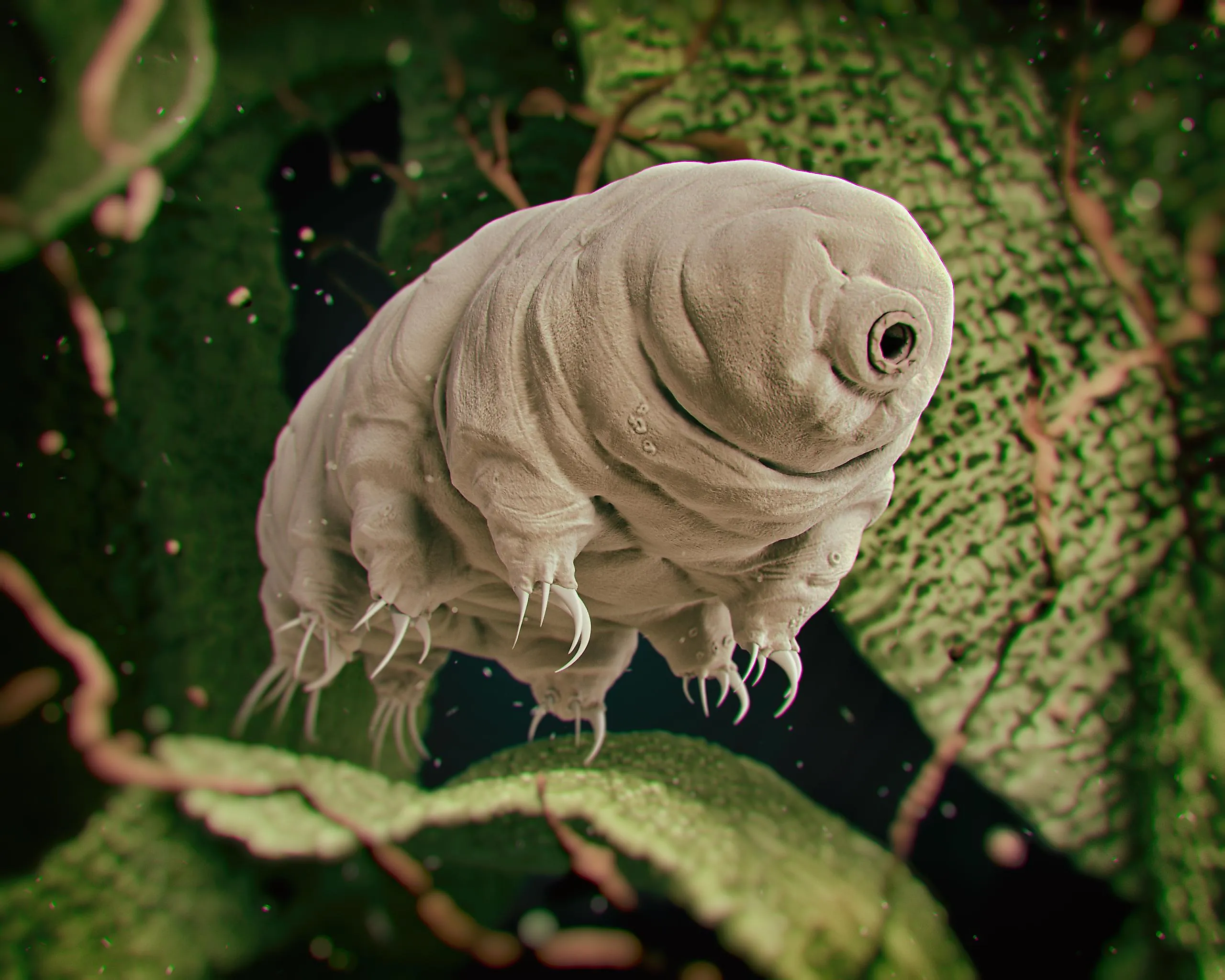
Tardigrades, The Ultimate Micro-Animal Survivors
Resembling a microscopic miniature bear, scientists have been curiously studying the tardigrade for centuries. In fact, German pastor J.A.E. Goeze was the first to describe the creature in 1773, who nicknamed them kleiner Wasserbär, meaning “little water bear”. Beyond their curious appearance, tardigrades are often considered a kind of supercreature, capable of surviving extreme temperatures, intense pressure, radiation, and even space vacuums. Their longevity and durability are largely thanks to a unique survival process called cryptobiosis and a protective protein known as DSUP. Not only do these traits intrigue researchers, but they also hold promise for advancements in medicine and environmental science.
Description & Background

Tardigrades, tiny invertebrates usually less than half a millimeter long, are found all over the world. There are currently around 1,300 known tardigrade species, with about 150 of them being recorded as marine species. Although they are considered aquatic due to a thin layer of water that surrounds their bodies to prevent dehydration, they inhabit all kinds of ecosystems, ranging from sand dunes and the arctic to the deep sea and tropical rainforests. Their favorite environment, however, is freshwater mosses and lichens, which have earned them the nickname moss piglets.
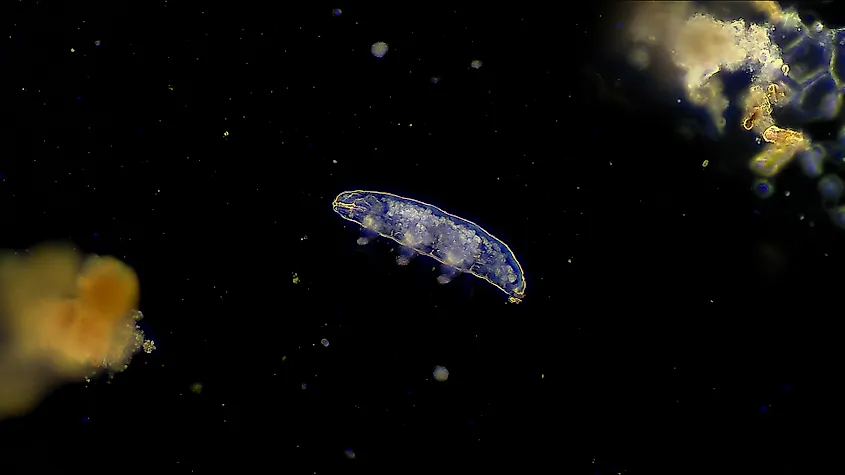
Although they appear squishy, they actually have a tough covering, similar to that of a praying mantis or grasshopper. Each of their feet has four to six claws, which they use to attach to plant matter. They also have a unique mouth part known as a bucco pharyngeal apparatus, which helps them to suck nutrients from microorganisms and plants. Most are omnivorous, eating animal cells, plant cells, and bacteria. Some, however, are completely carnivorous! Despite their presence in such diverse environments, scientific knowledge of tardigrades and how they function remains relatively limited.
Surviving the Extremes
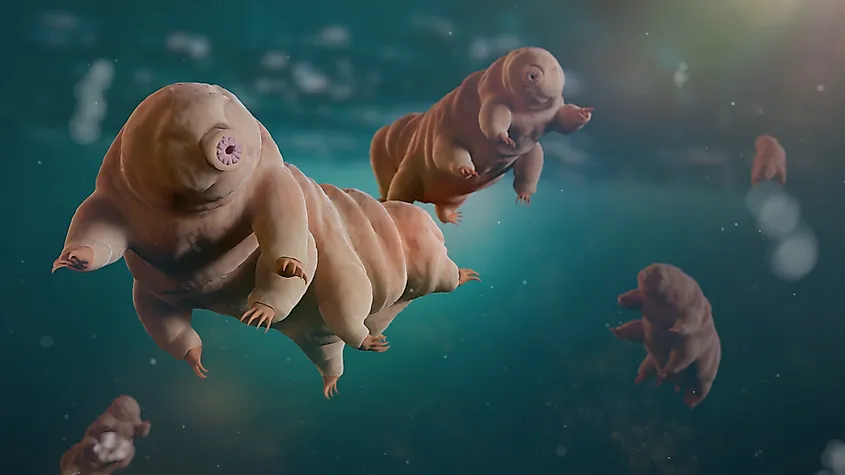
Classified as extremophiles, tardigrades can withstand a wide range of extreme conditions. They have been known to survive for nearly 30 years without food or water, endure temperatures from -200°C (-328°F) to 151°C (304°F), and tolerate pressures more than six times greater than those found in the deepest parts of the ocean. They can also survive radiation levels up to 1,000 times higher than the lethal dose for humans, and have even withstood the vacuum of space! Tardigrades’ extraordinary ability to survive extreme conditions has long puzzled scientists, leading to a range of theories over the years. Today, researchers have identified two main factors that appear to contribute to their resilience.
Extreme Survival Contributors
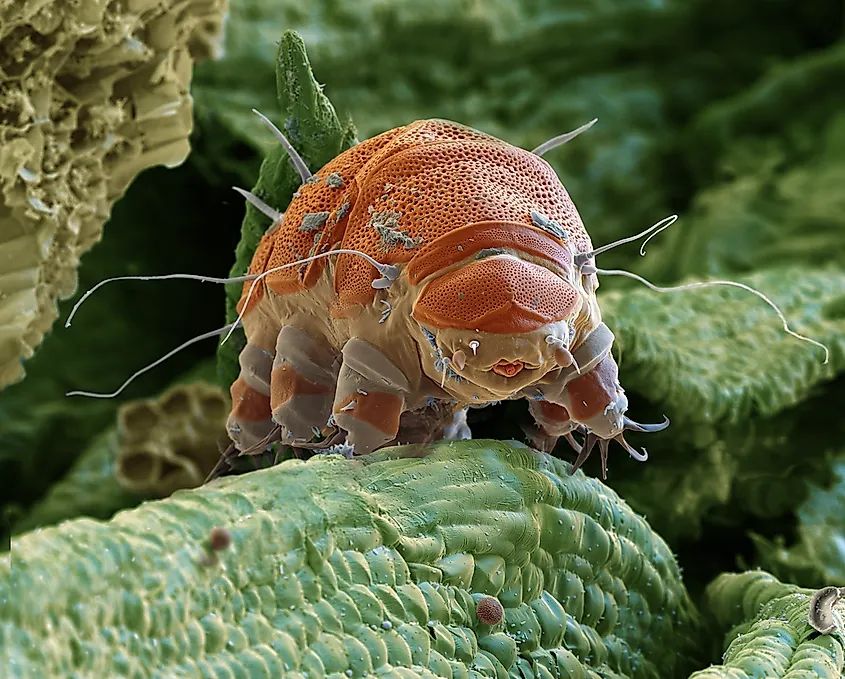
The first survival trait that aids tardigrades in extreme conditions is a process called Cryptobiosis. When the tardigrade finds itself in an extreme condition, such as a lack of water, low temperature, increased salt levels, or a lack of oxygen, it curls into a ball, retracting its head and limbs, squeezing the water from its body, and becomes dormant. During this state, its metabolic activity nearly comes to a complete halt. This suspended, almost death-like condition would be fatal to most other organisms, but it allows tardigrades to endure until their environment becomes habitable again.
Another contributor to its survival is a protein known as “DSUP”, which stands for “damage suppressor.” This protein, when exposed to damaging conditions such as ionizing radiation, found in water, soil, and vegetation, acts as a line of protection for the tardigrade’s DNA. Although this protein is only found on tardigrades, scientists have tested it on human cells, finding that it protects the cells from x-rays as well.
Potential Health and Environmental Applications

Scientists are hopeful that ongoing research into tardigrades and their survival systems may lead to breakthroughs with global, societal, and health-related applications. One promising application is in cancer treatment, where tardigrade proteins may help patients better tolerate radiation from chemotherapy. Researchers, for example, are exploring the use of DSUP-encoded messenger RNA to protect human tissue before treatment. In tests on mice, they have seen positive results thus far, with DNA radiation breaks reducing by about 50%.
Other scientists are exploring how tardigrades’ extreme survival traits could help address water scarcity. Thomas Boothby, a molecular biologist in Wyoming, sees potential in using their resilience to stabilize pharmaceuticals or to develop genetically engineered crops that can better endure harsh environmental conditions. Meanwhile, researchers at the University of California, San Diego, are investigating ways to develop animal cells that can survive longer under extreme conditions, which could potentially enhance both the longevity and resilience of cells.
Final Thoughts
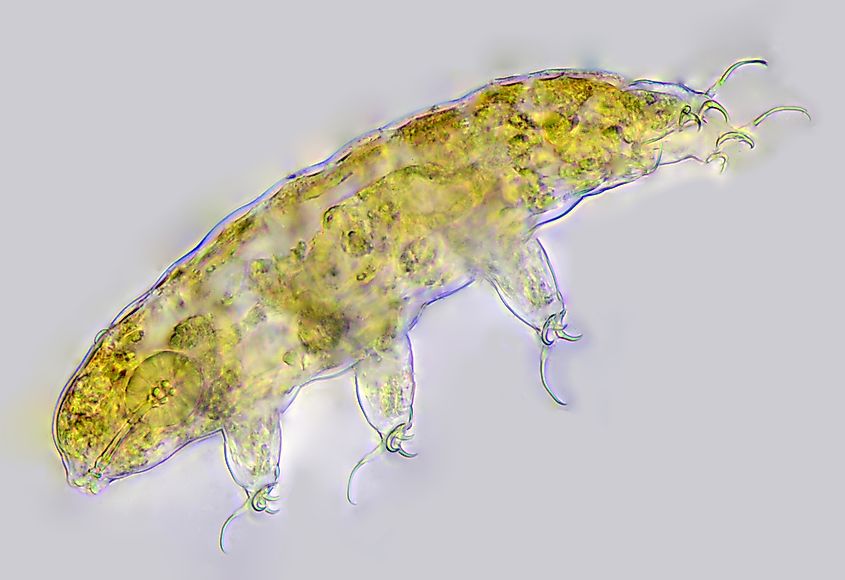
Little by little, scientists have been uncovering the secrets of the tardigrade. With a growing understanding of mechanisms like DSUP and cryptobiosis, researchers are beginning to identify their potential medical and environmental applications. Perhaps, this tiny, half-millimeter-long creature could one day play a role in improving cancer treatments or addressing water scarcity. As research continues, the full extent of the tardigrade’s impact on human health and wellbeing may soon come into focus.











